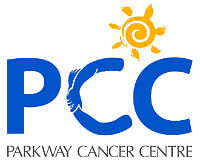
Why do certain types of cancer only affect children and teenagers?
In children, cancer cells often come from primitive cells that are believed to be the original cells that form and develop into organs. They are embryonal in origin and pathologists call them blastomas.
Leukaemias and lymphomas occur in both children and adults but though they may have very similar appearance under the microscope, although biologically they are different.
Acute leukaemia is curable in more than two-thirds of affected children, with chemotherapy alone, but it is often fatal in the adult patients.
Biologically, teenage cancers behave more like childhood cancers. Teenagers with leukaemias or lymphomas who are treated by paediatric oncologists have a better chance of survival compared with those who are treated by medical (adult medicine) oncologists. For every 100 patients treated, there are 10 to 20 more survivors in the hands of the paediatric oncologists.
What are the causes contributing to the onset of childhood/teenage cancers?
It is said that cancers affecting children usually occur during periods of vulnerability, where the body is undergoing early development and when organs are still forming.
99 per cent of childhood cancers are not inherited and it is a common misconception that children with cancer are predisposed to genes that run in the family.
A lot of research has been dedicated to finding out how and why but nothing relevant has come to light. Childhood cancer is exceedingly rare. Acute lymphoblastic leukaemia is the most common type of cancer in children.
In actual terms, it affects 30 to 40 out of a million children a year. In most developed countries, there are far more children who are killed by accidents and trauma in a calendar year.
So, whatever causes cancer in children cannot be a simple or common event. No one should blame the parents.
Who is at risk and why is follow-up so important for young cancer survivors?
As cancer treatment in children and teenagers require a specialised approach, many of them may suffer from late effects. Three out of four children diagnosed with cancer in Singapore are expected to survive into adulthood.
While we continue to celebrate life with our patients, we are also prepared to watch out for late effects from the disease and its treatment.
Growth and development, cognitive and learning disabilities, psychiatric disorders, mobility issues and specific organ malfunction are potential adverse consequences.
The very young infants, patients with brain tumours, those who have received disfiguring surgery, and those who have received radiotherapy are at higher risk to late effects.
Teenagers who have received potent chemotherapy or radiotherapy to their tummies may be at risk to reduced fertility.
As a group, childhood cancer survivors are at risk to other cancers as they age. About one to two per cent of them may develop a second cancer 10 or more years later.
Patients with sarcomas or those who have received radiotherapy have a higher chance of getting a second cancer.
The fear for late effects should not deter children from getting the right treatment. After all, the majority of cancer survivors do not have significant late effects. Many of the late effects can be treated or ameliorated with appropriate treatment or training.
Second cancers like meningiomas, breast cancers, and thyroid cancers are indeed curable if they are detected early. Therefore, continuous follow-up is essential.
What are the types of treatment available for childhood cancers?
Chemotherapy is often the main treatment in childhood leukaemia, lymphomas, and many other types of childhood cancers. Surgery and radiotherapy are also useful in certain types of cancers.
Are there screening procedures available for childhood cancers?
No, because any specific type of cancer in children is just too uncommon and there is no easy way (like breast examination, pap smear) to find them in children.
What can friends and family do to provide emotional and psychological support during treatment of childhood or teenage cancers?
If you know of a friend or a colleague who has a child with cancer, be sympathetic and keep life as usual as possible.
If you have been visiting or going out with them, keep doing it but at their convenience. If you are working in the same office, see how work can be shuffled or re-arranged so that they can go off or take leave to accompany their children to their treatment and rehabilitation.
Some parents find it comforting when they can talk to their friends and relatives at times of stress. Blogs and social media online are very popular nowadays.
At times, they may need some peace and rest. Be sensitive to their needs if you have been in dialogue with them.
Find out more about cancer and how to fight it on ST's Fighting Cancer microsite.
